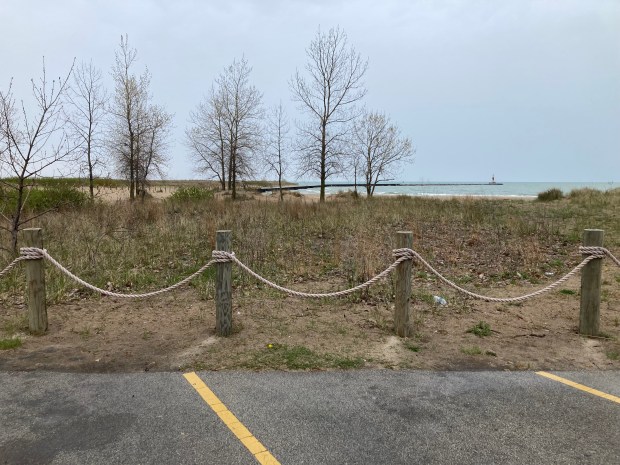Keeping garbage and pollutants out of Waukegan’s ravines and away from its wetlands took on a stronger meaning last week when the city joined the White House’s America the Beautiful Freshwater Challenge.
The challenge’s goal is to conserve and restore the country’s freshwater resources including its rivers, streams, lakes, and wetlands, according to a White House news release.
“Waukegan is a very environmentally conscious community,” Mayor Ann Taylor said. “We need to keep our water clean to help the Great Lakes. It takes all of us to keep our water supply in good shape.”
Waukegan is one of 10 states, 24 cities, nine Native American tribes, and 66 environmentally conscious organizations throughout the country currently part of the challenge committed to protecting the country’s fresh water for future generations.
“This is a national effort to, by 2030, to vastly improve our wetlands, rivers, and lakes,” Thomas Maillard, the city’s governmental affairs liaison, said.
Some people may not think twice about throwing unwanted items into one of the city’s many ravines but Maillard said such an errant toss can pollute fresh water from Waukegan to the Atlantic Ocean.
Maillard said fresh water flows through the city’s ravines through the Waukegan River and its tributaries into Lake Michigan taking any pollutants put there into the lake with it.
“What goes into our ravines goes into not only Lake Michigan but all the Great Lakes,” Maillard said explaining from there it reaches the St. Lawrence River and the Atlantic Ocean.
Of the nine cities that are part of the 109-member challenge as of Thursday, Waukegan is the only one in Illinois. Taylor said she is active with the Great Lakes and St. Lawrence Cities Initiative.
Maillard said Waukegan’s partnership with the Great Lakes and St. Lawrence Cities Imitative, which has strong ties to the White House, helped pave the city’s way into the freshwater challenge.
Jon Altenberg, the Great Lakes and St. Lawrence organization’s president and CEO, said the challenge is crucial since the Great Lakes represents 80% of North America’s fresh water and 20% of it on the Earth. He expects North Chicago, Zion, and Lake Forest to join too.
Taylor said fresh water means a great deal to Waukegan. It is essential to its economic development and a potential revenue source through sales to other towns. The city needs to take a leadership role when it comes to preserving it for future generations, he said.
“It takes all of us to keep our water supply in good shape,” Taylor said. “It goes hand in hand with who we are. We are stewards of our environment and our fresh water. We have to do everything we can for Waukegan to set an example for our neighbors.”
Remembering times when she was a young girl, Taylor said she saw soot on car windows from pollution occurring in what was Waukegan’s heavy industrial past. Those days are gone, but more needs to be done now.
Rachel Cantin, an assistant planner with the city and part of its Green Team, said meeting the freshwater challenge can be as simple as putting recyclable materials, garbage, and other waste in their proper place and not in the ravines.
When the city goes through a dry spell, Cantin said the Waukegan River — it is exclusively within the city limits — can be barely a trickle in the ravines but once there is a heavy rain, it can be as wide as 10 to 12 feet.
“The river is unique,” Cantin said. “It can be very small but when there is a major (rain) event the water level rises and it helps drive waste into Lake Michigan. Some of it gets on the beach and the wetlands there.”
Stretching for more than a mile along the Waukegan Municipal Beach, Cantin said the dunes with vegetation growing from the sand are wetlands. They help filter water runoff and are a biome for the area.
A goal of the freshwater challenge is protecting, restoring and reconnecting eight million acres of wetlands and 100,000 miles of the country’s rivers and streams, according to the press release. Waukegan has wetlands, rivers, and streams as well as its Lake Michigan shoreline.





